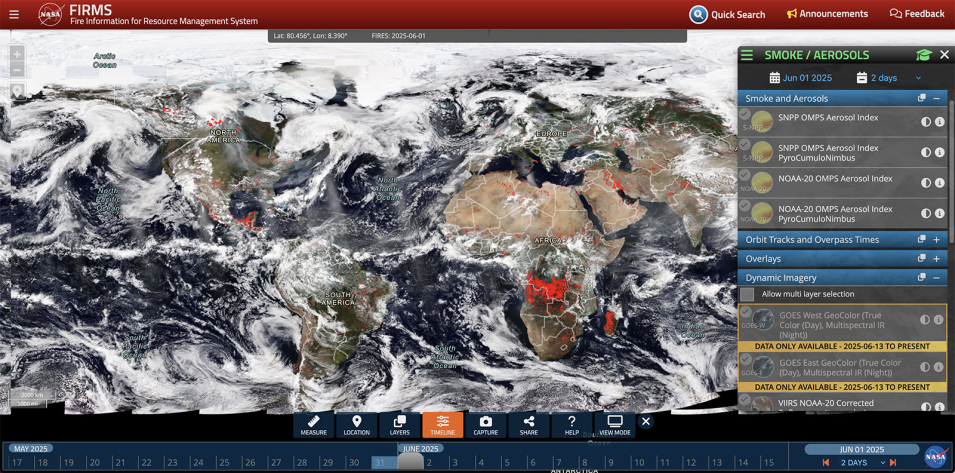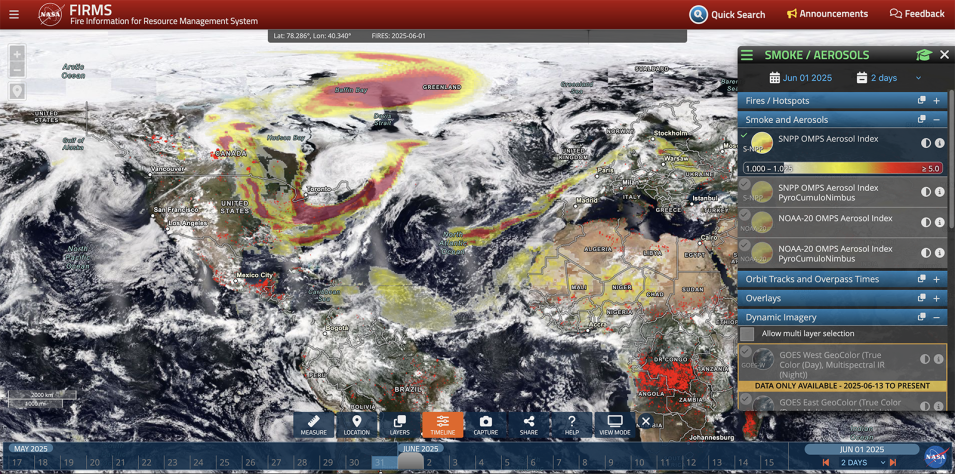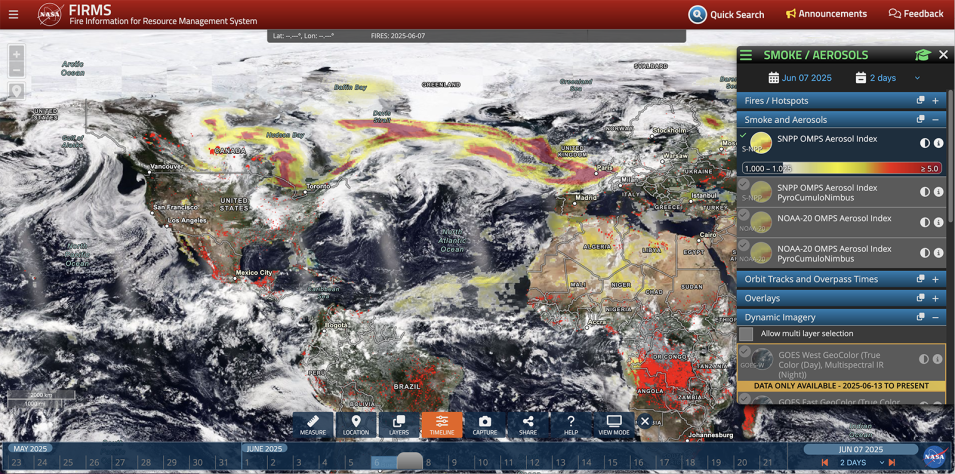Wildland fires can be a significant source of smoke that not only impairs our ability to enjoy clear vistas, but can be harmful to public health due to the gases and particulate matter smoke contains. When you see smoke in the sky, it may be originating from a relatively local fire or a fire that is occurring several hundred miles away.
The Fire Information for Resource Management System (FIRMS) Smoke/Aerosols mode (in both FIRMS Global and FIRMS US/Canada) can be useful for helping determine where the smoke is coming from. In this blog post, which is an update of one we published in 2021, we focus on smoke plumes from the recent Canadian wildland fires, highlighting how FIRMS can be used to track the spread of smoke plumes.
Viewing Smoke in FIRMS Using Corrected Reflectance Imagery
True color composite imagery acquired by instruments aboard several polar orbiting satellites including Terra Moderate Resolution Imaging Spectroradiometer (MODIS), Aqua MODIS, Suomi National Polar-orbiting Partnership (Suomi NPP) Visible Infrared Imaging Radiometer Suite (VIIRS), NOAA-20 VIIRS, and NOAA-21 VIIRS are provided as background “Dynamic Imagery” layers in FIRMS Global and FIRMS US/Canada Fire Maps. These layers display a "natural color image" of the Earth’s surface as it would look to the human eye from space.
Consequently, it is easy to see smoke using this type of imagery in clear sky conditions. The time of observation for these polar orbiting satellites occurs at different times during the day, so they can be used to identify current sources of wildland fire smoke and visualize its transport across long distances. Explore the orbit tracks in the “Orbit Tracks and Overpass Times” layer grouping to determine the daily overpass time for each satellite.
Viewing Smoke in FIRMS Using Aerosol Indices
Under the “Smoke and Aerosols” layer grouping, the standard Aerosol Index (AI) derived from Suomi NPP Ozone Mapping and Profiler Suite (OMPS) observations can also be used for identifying and tracking smoke as well as other aerosols. The OMPS Al, available in the “Overlays” layer grouping, detects and measures the density of smoke and suspended particles in the vertical air column in the atmosphere.
Typical values of the AI range from 0 to 5 and higher values indicate dust storms or biomass burning smoke located in the lower troposphere (1-3 km). Values of 5.0 indicate heavy concentrations of aerosols that could reduce visibility or impact human health. For AI values significantly higher than 5, use the OMPS PyroCumuloNimbus, or pyroCb, AI layer. Larger pyroCb AI values between 5 and 10 usually indicate dense smoke from intensely burning fires that reach higher in the troposphere. Once the index gets above 10, the smoke has likely been produced from a pyroCb event, with dense smoke lofted into the upper troposphere and, often, into the stratosphere. Read our blog post about pyroCb events.


